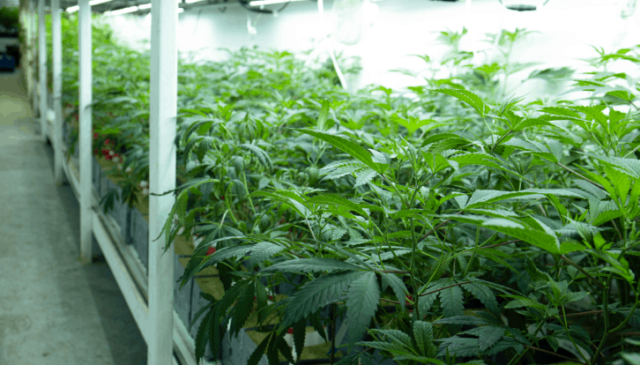
<![CDATA[
The Codes and Standards Enhancement (CASE) Initiative suggested new energy code requirements and changes to existing requirements for projects regarding greenhouses and controlled environment horticulture in California, updating the original California Energy Code (Title 24, Part 6) submitted in October 2020.
According to the proposal, the updated requirements will apply to projects regarding greenhouse building envelopes, greenhouse lighting, indoor controlled environment horticulture (CEH) lighting and indoor CEH dehumidification.
It is essential for cannabis and non-cannabis growers, LED manufacturers, engineers, distributors, energy-efficient consultants, research groups, industry trade groups, as well as facility managers, engineers and developers to be aware of the suggested changes, the proposal states.
The proposed code requirements are listed in the proposal as follows:
Horticultural Lighting Minimum Efficacy (indoor CEH lighting):
- For indoor CEH operations, luminaires with removable lamps will be required to use lamps with a photosynthetic photon efficacy (PPE) of at least 1.9 micromoles per joule.
- Luminaires without removable lamps shall meet a minimum luminaire PPE of 1.9 micromoles per joule.
- This will allow the use of efficient double-ended HPS lamps; most LED luminaires will qualify. The minimum efficacy requirements only apply to CEH spaces with more than 40 kW of aggregate horticultural lighting load. This equates to approximately (36) 1000W HPS luminaires.
Horticultural Lighting Minimum Efficacy (greenhouse lighting):
- For greenhouses, luminaires with removable lamps will be required to use lamps with a PPE of at least 1.7 micromoles per joule.
- Luminaires without removable lamps will also need to meet a minimum luminaire PPE of 1.7 micromoles per joule.
- The minimum efficacy requirements only apply to greenhouse lighting with more than 40 kW of aggregate horticultural lighting load.
Greenhouse Envelope Efficiency:
- Greenhouses will now have clear, simplified language for the skylight and window requirements that can be met using building materials and construction methods that are commonly deployed in the market (a U-factor of 0.7 or less).
- This clarifies and improves the existing energy code, which treated greenhouses with the same requirements as warehouses.
Dehumidification Efficiency:
- Stand-alone dehumidifiers will be required to meet the minimum federal efficiency standard.
- HVAC systems designed for dehumidification will need either heat recovery capabilities or will need to utilize solid desiccant or liquid desiccant dehumidification systems.
The purpose of the proposal is to explain each proposed code change clearly and to inform the California horticulture industry of the upcoming changes so they can prepare for them.
The proposal is currently under review by the California Energy Commission, and if approved, the updated requirements are expected to take effect for projects permitted on or after Jan. 1, 2023. Already existing facilities will only be required to comply if undergoing extensive modifications, the proposal states.
]]>
